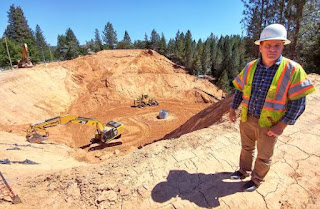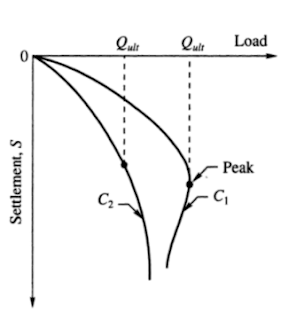Search This Blog
Most Popular
Categories
- Building Construction (87)
- Building Materials (85)
- Columns (2)
- Concrete Beam (3)
- Concrete Construction Techniques (6)
- Concrete Mix Design (15)
- Concrete Repair (14)
- Concrete Slab (11)
- Construction Equipment (17)
- Construction News (7)
- Design of Structures (19)
- Engineering Drawing (1)
- Estimation (3)
- Geotechnical engineering (26)
- Highway Engineering (11)
- Innovations (34)
- Material Testing (11)
- Matrix Analysis of Structures (2)
- Mechanical Engineering (3)
- Strength of Materials (2)
- Structural Analysis (13)
- Structural Design (24)
- Structures (17)
- Transportation Engineering (9)
What is Bearing Capacity of Soil and Load Settlement Curve ?
Whenever any structure is constructed above the ground like building foundations, a crane, etc., the ground must have the capacity to support the structure without undergoing excessive settlement or failure. This capacity of soil to sustain loads coming over it is measured by the parameter named "bearing capacity".
 |
| Image Credits: cdn.theunion.com |
The bearing capacity of the soil is the capacity of the soil to support the loads that are applied to the ground. The bearing capacity of a particular soil is dependent on the:
- Type of soil
- The shear strength of the soil
- The density of the soil
Features of Bearing Capacity of Soil
- General failure
- Local failure
- Punching shear failure
Types of Bearing Capacity of Soil
- Ultimate Bearing Capacity
- Allowable Bearing Capacity
1. Ultimate Bearing Capacity of the Soil (qu)
 |
| Shallow Foundation with Breadth B subjected to a load Q |
The load-settlement graph gives an indication of the ultimate load that can be taken by the soil, from which the bearing capacity of the soil is determined.
The typical behavior of the load-settlement curve for dense and loose clay is explained below, along with the determination of the ultimate load (Qu).
Load-Settlement Curve for Different Soil
 |
| Fig.2. Load-Settlement Curve for Dense sand (C1) and loose soil (C2) |
The load-settlement curve for dense or very stiff clay sand is shown in fig.2 below as curve C1. For dense sand or very stiff clay, the curve C1 abruptly passes to a peak value and then drops down as shown. This peak point is considered as the peak load, i.e., Qu.
For loose/soft clay, curve C2 continues to descend on a slope, which implies, the compression of soil is continuously taking place without giving a definite value for Qu. Here, Qu may be taken at a point beyond which there is a constant rate of penetration.
Once the ultimate load is determined, the ultimate bearing pressure or bearing capacity (qu) is calculated.

0 Comments
Commenting Spam Links Are Against Policies